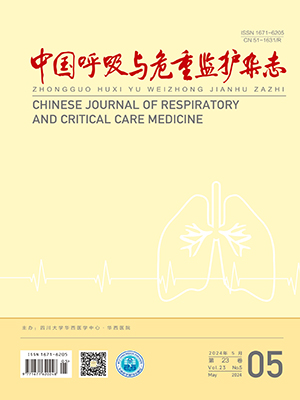Objective To evaluate the sedative effects of fentanyl on ventilated patients in intensive care unit (ICU ).Methods Thirty orotracheal intubated and mechanical ventilated medical patients in ICU were randomly divided into two groups,ie.Midazolam group (group M) and midazolam combined with fentanyl group with a proportion of 100∶1 (group M+F) The sedatives were continuously intravenously infused to achieve a target motor activity assessment scale (MAAS) of 3 and ventilator synchrony score of adaptation to the intensive care environment (ATICE) ≥3 after loading dose of midazolam.The sedation level was evaluated and the infusion rate was adjusted to maintain the target sedation goal every 2 h and the hemodynamic,respiratory and sedative parameters were recorded simultaneously.The oxygenation index were measured at 12 and 24 h.The infusion were ceased after 24 h,then the sedative degree was assessed every 30 min until MAAS ≥3 and the recover time were recorded.Results There were no significant differences in blood pressure,oxygenation index and adjustive frequency of drugs between the two groups (all P gt;0.05).The heart rate,respiratory rate and airway pressure in group M+F decreased significantly than those in Group M (P lt;0.05).The amount of midazolam used and cost of sedatives were lower than those in group M (P lt;0.05).Satisfactory degree of sedation or ventilator synchrony and awakeness score of ATICE in group M+F were higher than those in group M.The recover time was shorter in groupM+F (P lt;0.05).Conclusion In medical ventilated patients, fentanyl improves the sedative effect of midazolam and reduces the dose of midazolam,hence,reduce the total cost of sedatives.
Citation: WANG Xifeng,KANG Yan,LIU Jin. The sedative effects of fentanyl on ventilated patients in intensive care unit. Chinese Journal of Respiratory and Critical Care Medicine, 2007, 6(1): 33-38. doi: Copy




